Bitumen C600
Bitumen C600 Description
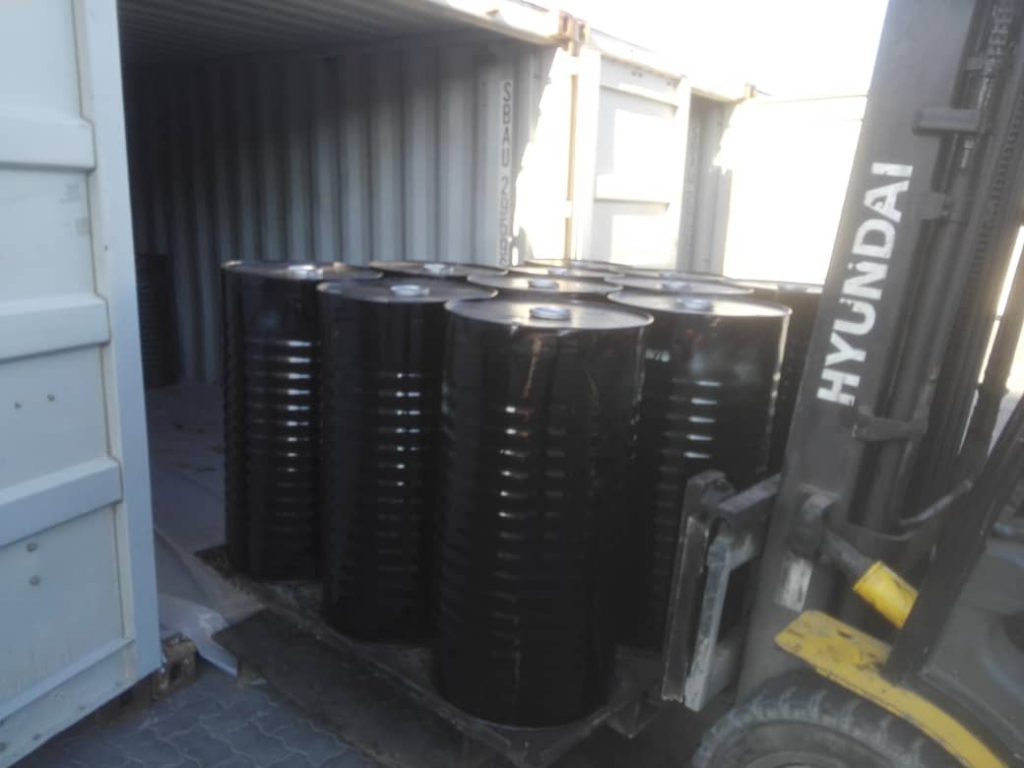
C600 is a paving grade bitumen manufactured to AS 2008 Table 2.2 and is primarily suitable for use in high modulus
base course asphalt.
Summary of benefits
The Viva standards to which C600 bitumen is made result in a very consistent bitumen with predictable handling and performance characteristics
Bitumen C600 Applications
C600 bitumen is the hardest paving grade bitumen available in Australia and is mainly used to produce high modulus
asphalt. Heavy-duty asphalt pavements need to be designed to accommodate significant traffic loadings for up to 40
years without exhibiting structural failure and hence, need to be constructed using appropriate materials. The load
spreading characteristics of pavement layers are governed by their stiffness and C600 bitumen facilitates the production of high modulus asphalt.
| Mixing Temperature | Holding time at Mixing Temperature | Medium term storage temperature | Medium term storage time | Maximum safe handling temperature |
| 175 – 185°C | 14 days | 130-150°C | 30 days | 190°C |
Health & safety
C600 is unlikely to present any significant health or safety hazard when properly used in the recommended
an application where good standards of industrial practice are maintained.
Bitumen C600 Typical characteristics
| Description | Units | Methods | Typical |
| Viscosity at 60° | Pa.s | AS 2341.2 | 600 |
| Viscosity at 135° | Pa.s | AS 2341.2 | 0.7 |
| Pen at 25° | dmm | AS 2341.12 | min 20 |
| Flashpoint | °C | AS 2341.14 | max 250 |
| Viscosity of residue at 60° C (% of original) | Pa.s | AS 2341.2 | max 300 |
Bitumen, also known as asphalt in the United States, is a substance that forms through the distillation of crude oil. It has waterproofing and adhesive properties. Bitumen production through distillation removes lighter crude oil components, such as gasoline and diesel, leaving the “heavier” Asphalt behind. The producer often refines it several times to improve its grade. Bitumen can also occur in nature: Deposits of naturally occurring bitumen form at the bottom of ancient lakes, where prehistoric organisms have since decayed and have been subjected to heat and pressure.
Bitumen C450
Bitumen C450 Description
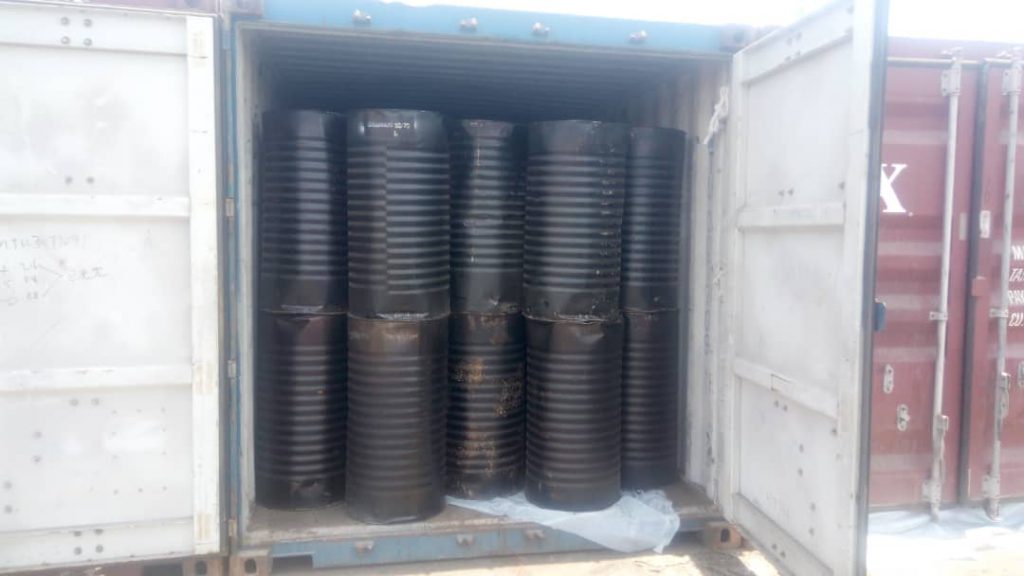
Bitumen C450 is a paving grade bitumen manufactured to comply with AS2008 Table 2.2 and is suitable for use in heavily trafficked asphalt.
Bitumen C450 Applications
C450 was originally a development from the Roads and Maritime Services in New South Wales and was incorporated into the 2012 revision of the national bitumen standard AS2008. C450 has been formulated to meet the viscosity requirements of AS2008 Table 2.2 whilst retaining excellent asphalt workability characteristics. The target applications are asphalt wearing courses and base courses for heavily trafficked pavements.
Asphalt recommendations
| Mixing Temperature | Holding time at Mixing Temperature | Medium term storage temperature | Medium term storage time | Maximum safe handling temperature |
| 165-175°C | 14 days | 130-150°C | 30 days | 190°C |
Health & safety
C450 is unlikely to present any significant health or safety hazard when properly used in the recommended application where good standards of industrial practice are maintained.
Further guidance on Product Health and Safety is available on the relevant Material Safety Data Sheet
Bitumen C450 Specifications
| Description | Units | Methods Typical | Results |
| Viscosity at 60° after RTFOT | Pa.s | AS 2341.2 | 750 – 1150 |
| Viscosity at 135° | Pa.s | AS 2341.2 | 0.7 max |
| Pen at 25° after RTFOT | dmm | AS 2341.12 | min 26 |
| Flashpoint | °C | AS 2341.14 | min 250 |
Bitumen, also known as asphalt in the United States, is a substance that forms through the distillation of crude oil. It has waterproofing and adhesive properties. Bitumen production through distillation removes lighter crude oil components, such as gasoline and diesel, leaving the “heavier” Asphalt behind. The producer often refines it several times to improve its grade.
Bitumen C320
Bitumen C320 Description
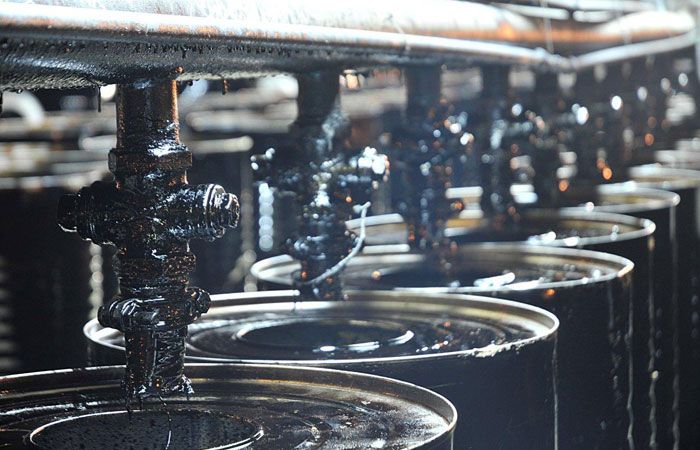
Bitumen C320 is a paving grade bitumen manufactured to AS 2008 Table 2.2 and is suitable for medium to heavy asphalt applications as well as for heavy-duty and hot climate seals.
C320 Applications
Bitumen C320 is primarily for use in asphalt, but can also be sprayed as a sealing binder for heavy-duty applications and in hot desert regions. In asphalt applications, appropriate mixture and pavement designs should be employed to maximize the performance of the asphalt layer in service.
Recommended handling data for asphalt applications are as follows:
| Mixing Temperature | Holding time at Mixing Temperature | Medium term storage temperature | Medium term storage time | Maximum safe handling temperature |
| 165-175°C | 14 days | 130-150°C | 30 days | 185°C |
Sealing recommendations
| Spraying Temperature | Holding time at spraying temperature | Medium term storage temperature | Medium term storage time | Minimum pavement temperature |
| 170-185°C | 7 days | 130-150°C | 30 days | 15°C |
Health & safety
Viva Bitumen C320 is unlikely to present any significant health or safety hazard when properly used in the recommended application where good standards of industrial practice are maintained.
Bitumen C320 Typical characteristics
| Description | Units | Methods | Typical |
| Viscosity at 60° C | Pa.s | AS 2341.2 | 320 |
| Viscosity at 135° C | Pa.s | AS 2341.2 | 0.5 |
| Pen at 25° C | dmm | AS 2341.12 | min 40 |
| Flashpoint | ° C | AS 2341.14 | min 250 |
| Viscosity of residue at 60° C (% of original) | Pa.s | AS 2341.2 | max 300 |
Bitumen, also known as asphalt in the United States, is a substance that forms through the distillation of crude oil. It has waterproofing and adhesive properties. Bitumen production through distillation removes lighter crude oil components, such as gasoline and diesel, leaving the “heavier” Asphalt behind. The producer often refines it several times to improve its grade.
Bitumen C240
Bitumen C240 Description
C240 is a paving grade Bitumen manufactured to AS 2008 Table 2.2 and is suitable for standard sealing and lightly trafficked asphalt applications.
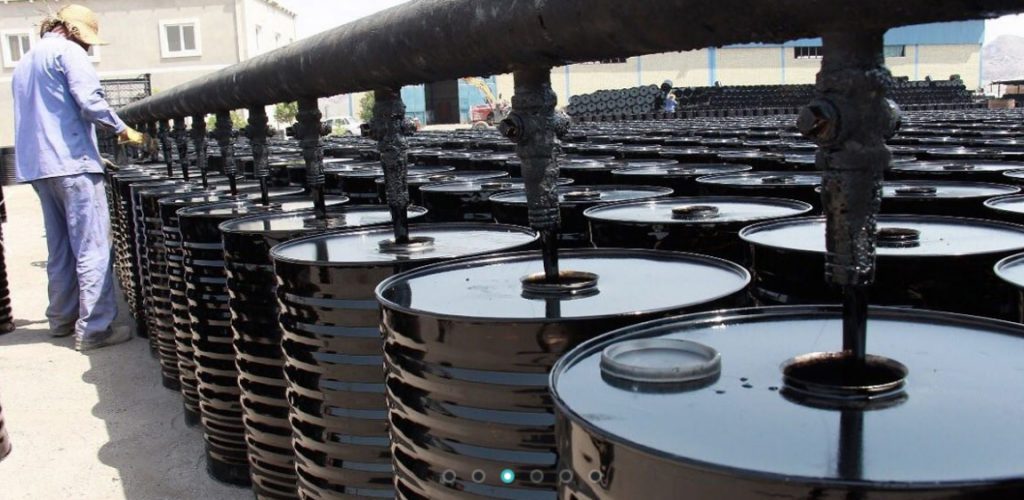
Bitumen C240 Applications
C240 bitumen can be used for all standard spray sealing and lightly trafficked asphalt applications.
Asphalt recommendations
| Mixing Temperature | Holding time at Mixing Temperature | Medium term storage temperature | Medium term storage time | Maximum safe handling temperature |
| 140-165°C | 14 days | 130-150°C | 30 days | 175°C |
Sealing recommendations
| Spraying Temperature | Holding time at spraying temperature | Medium term storage temperature | Medium term storage time | Minimum pavement temperature |
| 170-180°C | 7 days | 130-150°C | 30 days | 15°C |
During sealing operations, it is normal practice to add cutter oil to the bitumen to reduce binder viscosity to a level at which effective wetting and adhesion of the cover aggregate can take place. The quantity of cutter oil added to the bitumen depends upon the pavement temperature, the daily traffic, and the nominal size of the cover aggregate.
Basic cutting practice for Viva Bitumen C170 bitumen should be as follows:
Parts cutter per 100 parts bitumen measured at 15°C
| Pavement Temperature (°C) | Traffic (veh/lane/day) | Nominal Aggregate Size: 10mm or greater | Nominal Aggregate Size: 7mm or less |
| 15 to 20 | low (<100) med (100 – 1500) high (>1500) | 7-8 5-6 4 | 7-10 6-8 5-6 |
| 20 to 25 | low med high | 7-8 5-6 4 | 7-10 6-8 5-6 |
| 26 to 35 | low med high | 4-6 2-4 2-3 | 6-8 5-7 4-6 |
| >36 | all | 0-2 | 0-3 |
Bitumen C240 Health & safety
Bitumen C240 is unlikely to present any significant health or safety hazard when properly used in the recommended application where good standards of industrial practice are maintained. Further guidance on Product Health and Safety is available on the relevant Material Safety Data Sheet.
Typical characteristics
| Description | Units | Methods | Typical |
| Viscosity at 60° C | Pa.s | AS 2341.2 | 240 |
| Viscosity at 135° C | Pa.s | AS 2341.2 | 0.45 |
| Pen at 25° C | dmm | AS 2341.12 | min 53 |
| Flashpoint | ° C | AS 2341.14 | min 250 |
| Viscosity of residue at 60° C (% of original) | Pa.s | AS 2341.2 | max 300 |
Bitumen C170
Bitumen C170 Description
Bitumen C170 is a paving grade bitumen manufactured to AS 2008 Table 2.2 and is suitable for standard sealing and lightly trafficked Asphalt applications.

Bitumen C170 Applications
C170 bitumen can be used for all standard spray sealing and lightly trafficked asphalt applications.
Asphalt recommendations
| Mixing Temperature | Holding time at Mixing Temperature | Medium term storage temperature | Medium term storage time | Maximum safe handling temperature |
| 140-165°C | 14 days | 130-150°C | 30 days | 175°C |
Sealing Recommendations
| Spraying Temperature | Holding time at spraying temperature | Medium term storage temperature | Medium term storage time | Minimum pavement temperature |
| 170-180°C | 7 days | 130-150°C | 30 days | 15°C |
During sealing operations, it is normal practice to add cutter oil to the bitumen to reduce binder viscosity to a level at which effective wetting and adhesion of the cover aggregate can take place. The quantity of cutter oil added to the bitumen depends upon the pavement temperature, the daily traffic, and the nominal size of the cover aggregate. Basic cutting practice for Viva Bitumen C170 bitumen should be as follows:
Parts cutter per 100 parts bitumen measured at 15°C
| Pavement Temperature (°C) | Traffic (veh/lane/day) | Nominal Aggregate Size: 10mm or greater | Nominal Aggregate Size: 7mm or less |
| 15 to 20 | low (<100) med (100 – 1500) high (>1500) | 7-8 5-6 4 | 7-10 6-8 5-6 |
| 20 to 25 | low med high | 7-8 5-6 4 | 7-10 6-8 5-6 |
| 26 to 35 | low med high | 4-6 2-4 2-3 | 6-8 5-7 4-6 |
| >36 | all | 0-2 | 0-3 |
Health & safety
HJ OIL Bitumen C170 is unlikely to present any significant health or safety hazard when properly used in the recommended application where good standards of industrial practice are maintained. Further guidance on Product Health and Safety is available on the relevant Material Safety Data Sheet.
Typical characteristics
| Description | Units | Methods | Typical |
| Viscosity at 60° C | Pa.s | AS 2341.2 | 170 |
| Viscosity at 135° C | Pa.s | AS 2341.2 | 0.35 |
| Pen at 25° C | dmm | AS 2341.12 | min 62 |
| Flashpoint | ° C | AS 2341.14 | min 250 |
| Viscosity of residue at 60° C (% of original) | Pa.s | AS 2341.2 | max 300 |

Bitumen Number 40
Bitumen Number 40 Description
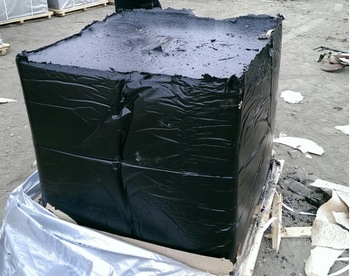
Bitumen 40 is a type of hard grade building asphalt with penetration starting from #40 that is why it is famous asphalt number 40. Bitumen Number 40 is available in bag and drum also the bulk tanker. This grade of asphalt building material is mostly using in the eastern Asia market especially Taiwan and China also the Philippine and Indonesia. Bitumen grade 40 is the most consumable hard asphalt which is a semi-solid grade of pure petroleum bitumen categorized in polycyclic aromatic hydrocarbons is normally used for different purposes in the construction business.
Blown Asphalt No. 40 Applications
1. For underground moisture, waterproofing works
2. For nuclear power engineering, pipeline engineering, bottom anticorrosion, asphalt production of the production
3. For waterproofing membrane, moisture-proof paper production, etc.
4. For Anti-corrosion paint and waterproof production
5. Used for road and bridge caulking use
Blown Asphalt No. 40 Specs
| Technical indicators | 10 |
| Penetration (25 ° C, 100 g, 5 s) / (0.1 mm) | 10-26 |
| The ductility (25 ° C, 5 cm / min) / cm is not less than | 1.5 |
| Softening point (ball method) / ℃ not less than | 95 |
| Solubility (trichloroethylene) /% is not less than | 99.5 |
| Evaporation loss (163 ° C, 5 h) /% no more than | 1 |
| After evaporation, the penetration ratio (25 ℃) /% is not less than | 65 |
| Flashpoint (open cup) / ℃ not less than | 230 |
| Brittle / ℃ | report |
Bitumen No.40 Packing
Bitumen Number 40 in various packing including kraft bag, meltable plastic bag, drum, and bulk, it is made by hot air in a controlled process until the desired specification is reached. Bitumen Number 40 can be supplied in volume quantity as well. Bitumen #40 means the softening point is 115°c and penetration is 15 desi millimeter is produced in compliance and conformity to ASTM standard and meets the mentioned specification.
Bitumen Number 30
Bitumen Number 30 Description
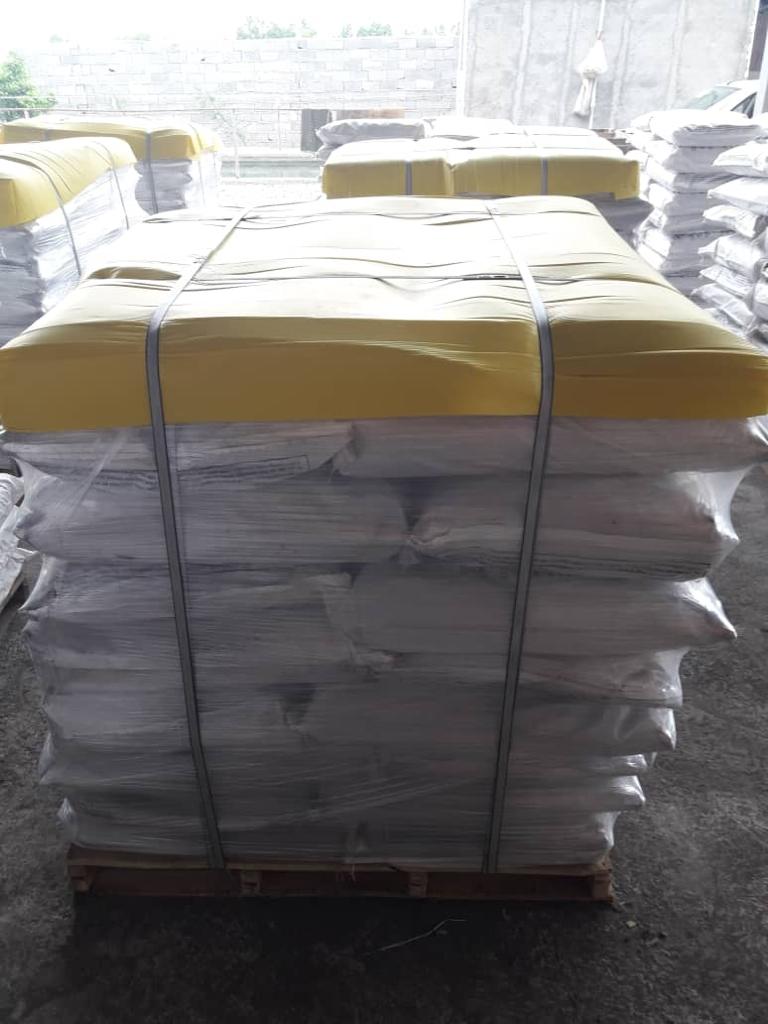
Bitumen30 is a type of hard grade building asphalt with penetration starting from #30 that is why it is famous asphaltum number 30. Bitumen Number 30 is available in bag and drum also the bulk tanker. This grade of asphalt building material is mostly using in the eastern Asia market especially Taiwan and China also the Philippine and Indonesia. Bitumen grade 30 is the most consumable hard asphalt which is a semi-solid grade of pure petroleum bitumen categorized in polycyclic aromatic hydrocarbons is normally used for different purposes in the construction business.
Blown Asphalt N0. 30 Applications
1. For underground moisture, waterproofing works
2. For nuclear power engineering, pipeline engineering, bottom anticorrosion, asphalt production of the production
3. For waterproofing membrane, moisture-proof paper production, etc.
4. For Anti-corrosion paint and waterproof production
5. Used for road and bridge caulking use
Blown Asphalt No. 30 Specs
| Technical indicators | 10 |
| Penetration (25 ° C, 100 g, 5 s) / (0.1 mm) | 10-26 |
| The ductility (25 ° C, 5 cm / min) / cm is not less than | 1.5 |
| Softening point (ball method) / ℃ not less than | 95 |
| Solubility (trichloroethylene) /% is not less than | 99.5 |
| Evaporation loss (163 ° C, 5 h) /% no more than | 1 |
| After evaporation, the penetration ratio (25 ℃) /% is not less than | 65 |
| Flashpoint (open cup) / ℃ not less than | 230 |
| Brittle / ℃ | report |
Bitumen No.30 Packing
Bitumen Number 30 in various packing including kraft bag, meltable plastic bag, drum, and bulk, it is made by hot air in a controlled process until the desired specification is reached. bitumen Number 30 can be supplied in volume quantity as well. Bitumen #30 means the softening point is 115°c and penetration is 15 desi millimeter is produced in compliance and conformity to Astm standard and meets the mentioned specification.
Bitumen Number 10
Bitumen Number 10 Description
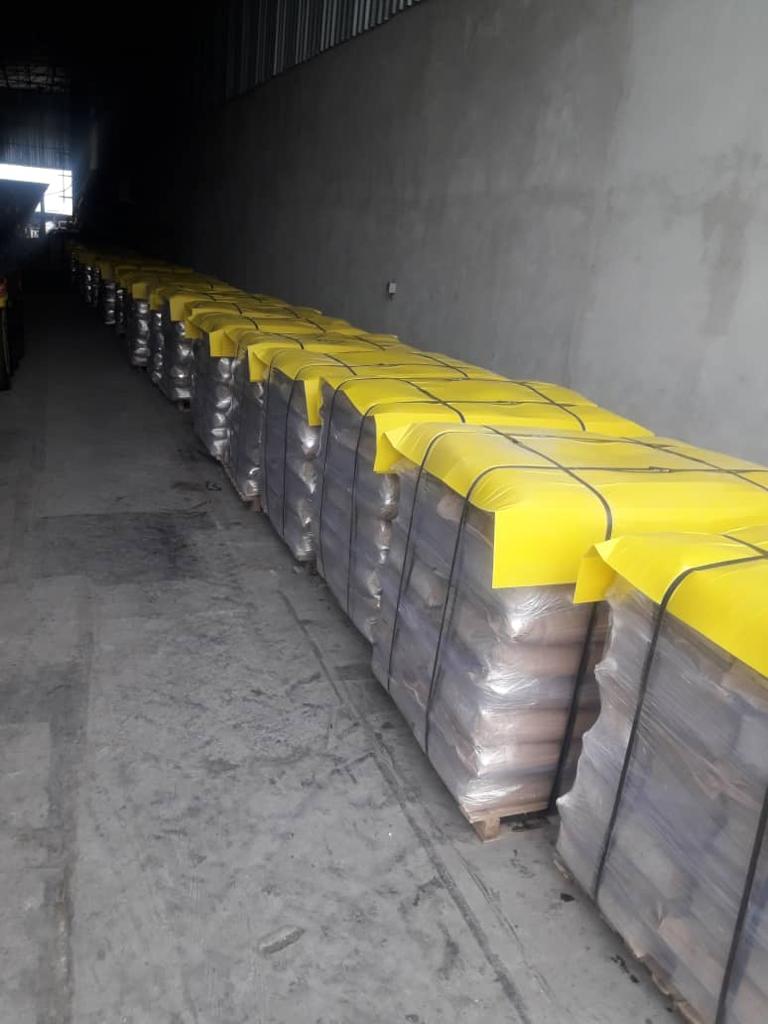
Bitumen 10 is a type of hard grade building asphalt with penetration starting from #10 that is why it is famous asphaltum number 10. Bitumen Number 10 is available in bag and drum also the bulk tanker. This grade of asphalt building material is mostly using in the eastern Asia market especially Taiwan and China also the Philippine and Indonesia. Bitumen grade 10 is the most consumable hard asphalt which is a semi-solid grade of pure petroleum bitumen categorized in polycyclic aromatic hydrocarbons is normally used for different purposes in the construction business.
Blown Asphalt N0. 10 Applications
1. For underground moisture, waterproofing works
2. For nuclear power engineering, pipeline engineering, bottom anticorrosion, asphalt production of the production
3. For waterproofing membrane, moisture-proof paper production, etc.
4. For Anti-corrosion paint and waterproof production
5. Used for road and bridge caulking use
Blown Asphalt No. 10 Specs
| Technical indicators | 10 |
| Penetration (25 ° C, 100 g, 5 s) / (0.1 mm) | 10-26 |
| The ductility (25 ° C, 5 cm / min) / cm is not less than | 1.5 |
| Softening point (ball method) / ℃ not less than | 95 |
| Solubility (trichloroethylene) /% is not less than | 99.5 |
| Evaporation loss (163 ° C, 5 h) /% no more than | 1 |
| After evaporation, the penetration ratio (25 ℃) /% is not less than | 65 |
| Flashpoint (open cup) / ℃ not less than | 230 |
| Brittle / ℃ | report |
Bitumen No.10 Packing
Bitumen Number 10 in various packing including kraft bag, meltable plastic bag, drum, and bulk, it is made by hot air in a controlled process until the desired specification is reached. bitumen Number 10 can be supplied in volume quantity as well. Bitumen #10 means the softening point is 115°c and penetration is 15 desi millimeter is produced in compliance and conformity to Astm standard and meets the mentioned specification.
Oxidized Bitumen 75/25
Oxidized Bitumen 75/25 Description

Oxidized Bitumen 75/25 is an oxidized Bitumen produced by oxidizing a selected petroleum asphalts without adding the catalyst. Bitumen 75/25 has a high softening point, high flash point and it is highly stable during melting. This kind of Blown Asphalt is mostly using in the Mediterranean and especially the morocco market.
Blown Asphalt 75/25 is produced by the air-blowing of penetration grade bitumen. This is done at high temperatures, resulting in a material of a much higher penetration index.
Bitumen 75/25 is based on petroleum bitumen which is made by blowing bitumen 60/70 by very hot air. The designation of the Oxidised bitumen 75/25 refers to the midpoint of the softening point acceptance criteria.
Blown Asphalt is a solid or semi-black solid material and gradually liquid when heated. Oxidized Bitumen grades are blown or oxidized bitumen‘s which are produced by passing air through soft bitumen under controlled temperature conditions. This process gives the bitumen more rubbery properties than penetration or hard grade bitumens and a variety of uses in industrial applications.
Bitumen 75/25 is produced by either Continuous or Staggered Blowing Process. Heated Penetration Grade Bitumen under controlled environment is blown with air which controls the Oil Content in the Bitumen while it oxidized. The different grades for suited applications produced are designated by two numbers to indicate the mid-points of their softening point and penetration ranges.
As said before, Bitumen 75/25 is based on petroleum bitumen which is made by blowing bitumen 60/70 by very hot air. In addition, the numbers relate to the midpoint of the material’s softening point and penetration respectively. The softening point value measured by the Ring and Ball method as determined by ASTM D36. Also, the penetration value is in 1/10 mm as determined by IP49 or ASTM- D5.
Oxidized Bitumen 75/25 Applications
Blown Asphalt 75/25 grades are produced by passing air through soft bitumen under controlled temperature conditions. This process gives the bitumen more rubbery properties than penetration or hard grade bitumen and enables the product to serve a variety of uses in industrial applications. These grades are suitable for sealing saw cuts and joints where there is expected to be the minimum amount of moving in the joint. Their wide temperature range prevents bleeding in high-temperature applications. They can also be used for industrial applications such as pipe coating, roofing, waterproofing, flooring, mastics, sound damping, carpet backing, adhesive and electrical applications. Hard bitumen under controlled temperature conditions is widely used as an anti-slip layer compound in the piling industry, for the manufacture of roofing felts, the roofing and waterproofing industries, for sound dampening felts and undercarriage sealant in the automotive industry, electric cable joint protection, joint filling compound, sealant compound, and many others. Also used in sealing saw cuts and joints where expected movements are minimum.
Technical Advantages of Blown Asphalt 75/25
- Durability
- Flexibility
- Water-Resistant
- Chemical Stability
Compared to paving grade bitumen:
- Reduced temperature susceptibility
- Exhibits a more ‘solid’ nature at ambient temperatures
- High penetration index
Recommendations for Handling / Storage
The heating of packaged bitumen is a critical phase in most of the final uses. Typically, the packaged material is heated and melted in boilers out on site.
However, control at the heating phase is very important in terms of health and safety as well as in maintaining the quality of the product.
A note must be taken of the maximum safe handling temperature of 230 C and this should not be abused. Bitumen is a poor conductor of heat, consequently, control of the heating phase is of paramount importance.
The Oxidized Bitumen material should be broken up prior to placement in the boiler. This exposes a larger surface area to the heat and encourages a more even heating regime. Without the larger exposed surface area, aggressive heating at the base and sides of the boiler may well result in localized overheating, altering the characteristics of the modified bitumen, and potentially causing thermal cracking of the bitumen, creating the release of low lash vapors. The flashpoint of the oxidized bitumen then becomes irrelevant; as these low flash vapors determine the fire risk.
Melted bitumen should not be left in the boiler and reheated from cold, as there is then a high potential for localized overheating around the heating area (lack of convection means poor heat transfer) and potential development of a pressurized pocket of low flash vapors.
Be aware of the placement of any temperature monitoring or control devices. As a result of the poor thermal conductivity of the bitumen, a thermometer in the bitumen some distance from the heat source could read significantly different (even hundreds of degrees) from the true temperature of the bitumen near the heat source.
For Health and Safety information, please make reference to the relevant MSDS.
Health & Safety
Workers should wear protective masks, gloves, and goggles during application. The asphalt can be removed from equipment and tools with kerosene or gasoline. Care should be taken when heating Blown Asphalt 75/25 to avoid overheating
Oxidized Bitumen 75/25 is a dark industrial bitumen. Petroleum residue modified by the oxidation process. In addition, Blown Asphalt is produced by passing air through bitumen under a controlled temperature state. Its stability ranges from highly viscous to solid. Blown Asphalt grade has technical advantages such as durability, flexibility, water-resistant and chemical stability. There is also a different grade of blown bitumen.
Blown Grade Asphalt shall be broken up into small pieces and heated slowly to the application temperature of 220ºC to 230ºC.
Packing of Oxidized Bitumen 75/25
Oxidized Bitumen 75/25 in various packing, including bitumen 75/25 is available in 20 & 50 kg Kraft Paper Bags / Poly Amide Bags, 25 kg Carton box, and 150, 180, 200kg Steel Drums. In addition, oxidized bitumen packing also palletize, 40 bags can stack on the pallet. 20 pallets can load to the 20ft container.
Technical Data Sheet of Blown Asphalt 75/25
| Bitumen 75/25 | Test method | Unit | Specification |
| Specific gravity @25/25 C | ASTM D70 | (Kg/m3) | 1.05 approx. |
| Penetration @ 25°c | ASTM D5 | mm/10 | 30/40 |
| Softening point °c | ASTM D36 | °C | 70/80 |
| Loss on heating(wt) % | ASTM D6 | Wt. % | 0.2 max |
| Flashpoint c | ASTM D92 | °C | 250 min |
| Solubility is CS2(wt) % | ASTM D4 | Wt. % | 99.5 max |
| Spot test | A.A.S.H.T.O 102 | — | Negative |
Oxidized Bitumen 75/35
Oxidized Bitumen 75/35 Description
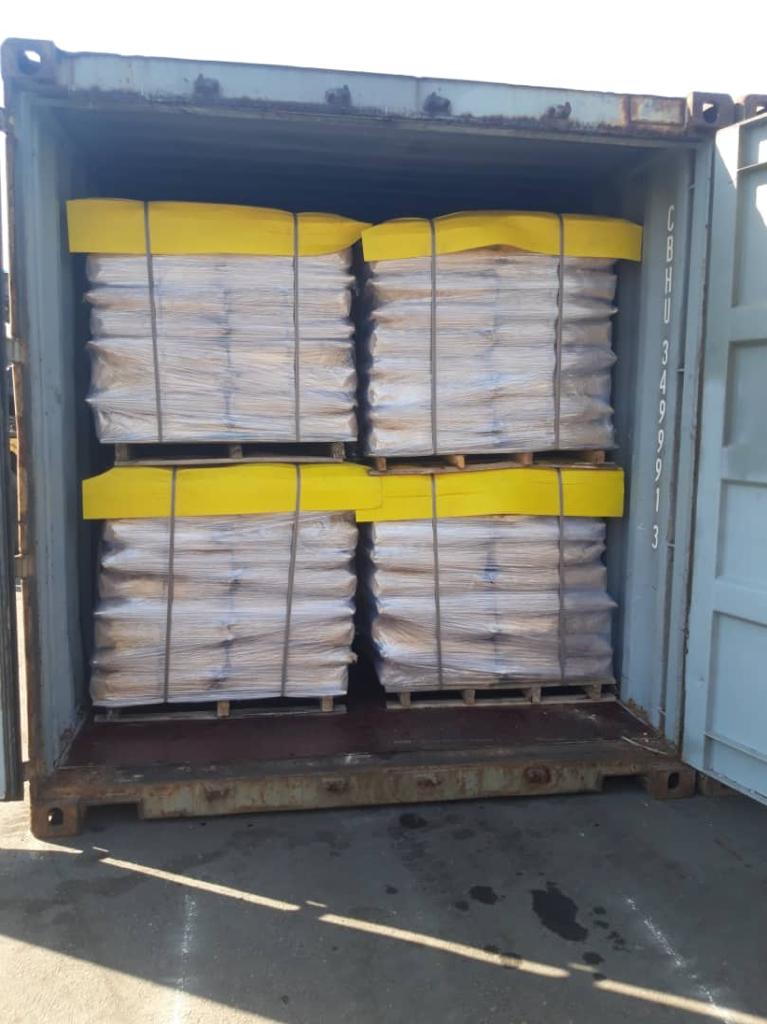
Blown Asphalt 75/35 is an oxidized Bitumen produced by oxidizing a selected petroleum asphalts without adding the catalyst. Bitumen 75/35 has a high softening point, high flash point and it is highly stable during melting. This kind of Blown Asphalt is mostly using in the Mediterranean and especially the morocco market.
Blown Asphalt 75/35 is produced by the air-blowing of penetration grade bitumen. This is done at high temperatures, resulting in a material of a much higher penetration index.
Bitumen 75/35 is based on petroleum bitumen which is made by blowing bitumen 60/70 by very hot air. The designation of the Oxidised bitumen 75/35 refers to the midpoint of the softening point acceptance criteria.
Blown Asphalt is a solid or semi-black solid material and gradually liquid when heated. Oxidized Bitumen grades are blown or oxidized bitumen‘s which are produced by passing air through soft bitumen under controlled temperature conditions. This process gives the bitumen more rubbery properties than penetration or hard grade bitumens and a variety of uses in industrial applications.
Bitumen 75/35 is produced by either Continuous or Staggered Blowing Process. Heated Penetration Grade Bitumen under controlled environment is blown with air which controls the Oil Content in the Bitumen while it oxidized. The different grades for suited applications produced are designated by two numbers to indicate the mid-points of their softening point and penetration ranges.
As said before, Bitumen 75/35 is based on petroleum bitumen which is made by blowing bitumen 60/70 by very hot air. In addition, the numbers relate to the midpoint of the material’s softening point and penetration respectively. The softening point value measured by the Ring and Ball method as determined by ASTM D36. Also, the penetration value is in 1/10 mm as determined by IP49 or ASTM- D5.
Oxidized Bitumen 75/35 Applications
Blown Asphalt 75/35 grades are produced by passing air through soft bitumen under controlled temperature conditions. This process gives the bitumen more rubbery properties than penetration or hard grade bitumen and enables the product to serve a variety of uses in industrial applications. These grades are suitable for sealing saw cuts and joints where there is expected to be the minimum amount of moving in the joint. Their wide temperature range prevents bleeding in high-temperature applications. They can also be used for industrial applications such as pipe coating, roofing, waterproofing, flooring, mastics, sound damping, carpet backing, adhesive and electrical applications. Hard bitumen under controlled temperature conditions is widely used as an anti-slip layer compound in the piling industry, for the manufacture of roofing felts, the roofing and waterproofing industries, for sound dampening felts and undercarriage sealant in the automotive industry, electric cable joint protection, joint filling compound, sealant compound, and many others. Also used in sealing saw cuts and joints where expected movements are minimum.
Technical Advantages of Blown Asphalt 75/35
- Durability
- Flexibility
- Water-Resistant
- Chemical Stability
Compared to paving grade bitumen:
- Reduced temperature susceptibility
- Exhibits a more ‘solid’ nature at ambient temperatures
- High penetration index
Recommendations for Handling / Storage
The heating of packaged bitumen is a critical phase in most of the final uses. Typically, the packaged material is heated and melted in boilers out on site.
However, control at the heating phase is very important in terms of health and safety as well as in maintaining the quality of the product.
A note must be taken of the maximum safe handling temperature of 230 C and this should not be abused. Bitumen is a poor conductor of heat, consequently, control of the heating phase is of paramount importance.
The Oxidized Bitumen material should be broken up prior to placement in the boiler. This exposes a larger surface area to the heat and encourages a more even heating regime. Without the larger exposed surface area, aggressive heating at the base and sides of the boiler may well result in localized overheating, altering the characteristics of the modified bitumen, and potentially causing thermal cracking of the bitumen, creating the release of low lash vapors. The flashpoint of the oxidized bitumen then becomes irrelevant; as these low flash vapors determine the fire risk.
Melted bitumen should not be left in the boiler and reheated from cold, as there is then a high potential for localized overheating around the heating area (lack of convection means poor heat transfer) and potential development of a pressurized pocket of low flash vapors.
Be aware of the placement of any temperature monitoring or control devices. As a result of the poor thermal conductivity of the bitumen, a thermometer in the bitumen some distance from the heat source could read significantly different (even hundreds of degrees) from the true temperature of the bitumen near the heat source.
For Health and Safety information, please make reference to the relevant MSDS.
Health & Safety
Workers should wear protective masks, gloves, and goggles during application. The asphalt can be removed from equipment and tools with kerosene or gasoline. Care should be taken when heating Blown Asphalt 75/35 to avoid overheating
Oxidized Bitumen 75/35 is a dark industrial bitumen. Petroleum residue modified by the oxidation process. In addition, Blown Asphalt is produced by passing air through bitumen under a controlled temperature state. Its stability ranges from highly viscous to solid. Blown Asphalt grade has technical advantages such as durability, flexibility, water-resistant and chemical stability. There is also a different grade of blown bitumen.
Blown Grade Asphalt shall be broken up into small pieces and heated slowly to the application temperature of 220ºC to 230ºC.
Packing of Oxidized Bitumen 75/35
Blown Asphalt 75/35 in various packing, including bitumen 75/35 is available in 20 & 50 kg Kraft Paper Bags / Poly Amide Bags, 25 kg Carton box, and 150, 180, 200kg Steel Drums. In addition, oxidized bitumen packing also palletize, 40 bags can stack on the pallet. 20 pallets can load to the 20ft container.
Technical Data Sheet of Blown Asphalt 75/35
| Bitumen 75/35 | Test method | Unit | Specification |
| Specific gravity @25/25 C | ASTM D70 | (Kg/m3) | 1.05 approx. |
| Penetration @ 25°c | ASTM D5 | mm/10 | 30/40 |
| Softening point °c | ASTM D36 | °C | 70/80 |
| Loss on heating(wt) % | ASTM D6 | Wt. % | 0.2 max |
| Flashpoint c | ASTM D92 | °C | 250 min |
| Solubility is CS2(wt) % | ASTM D4 | Wt. % | 99.5 max |
| Spot test | A.A.S.H.T.O 102 | — | Negative |
